Reichenbach
Rare Large Floral Round Platter - Fine China - Reichenbach - c1918
Rare Large Floral Round Platter - Fine China - Reichenbach - c1918
Couldn't load pickup availability
This is a truly rare and special find - and endlessly beautiful!
Even with extensive research, I wasn't able to find anything like this exceptional Art Nouveau plate. But the mark shows clearly that it was produced shortly before 1918, when the company was bought by the brothers Christian and Ernst Carstens, Reichenbach.
The design is stunning: branches and leaves in brown, delicate flowers in terracotta. Plus a corrugated rim with a golden border. This is German "Jugendstil" in it's best form.
The plate is in pristine condition: no chips, no crazing, no sign of wear and tear.
- Material: Fine China
- Style: Art Nouveau / Jugendstil
- Place of Origin: Germany
- Date of Manufacture: around 1918
- Condition: Mint
Dimension:
Diameter: 31 cm | 12.2 in
Diameter with handles: 34 cm | 13.3 in
Height: 5 cm | 2 in
Share
- Worldwide Shipping
- Secure Packaging
- Loving Curation
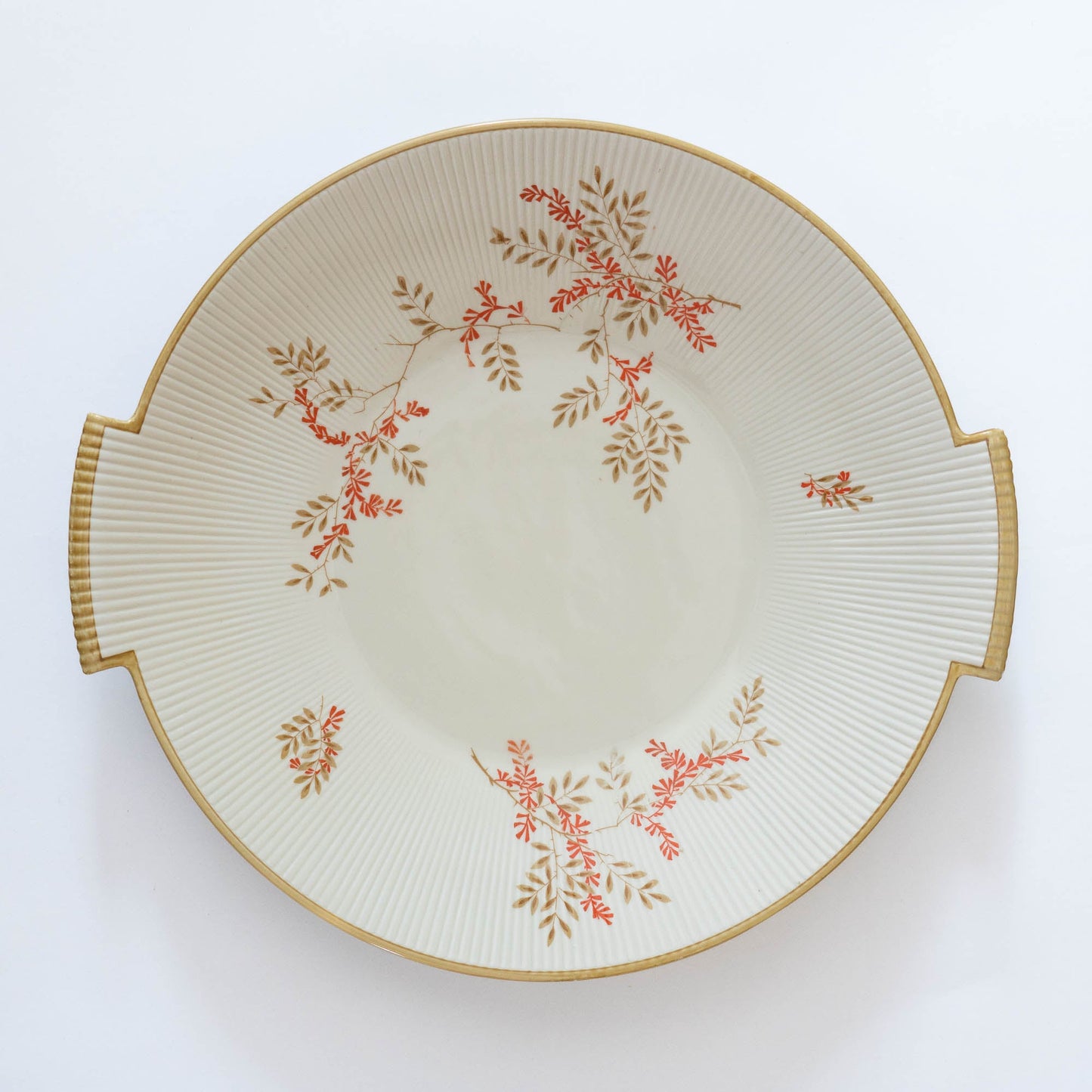
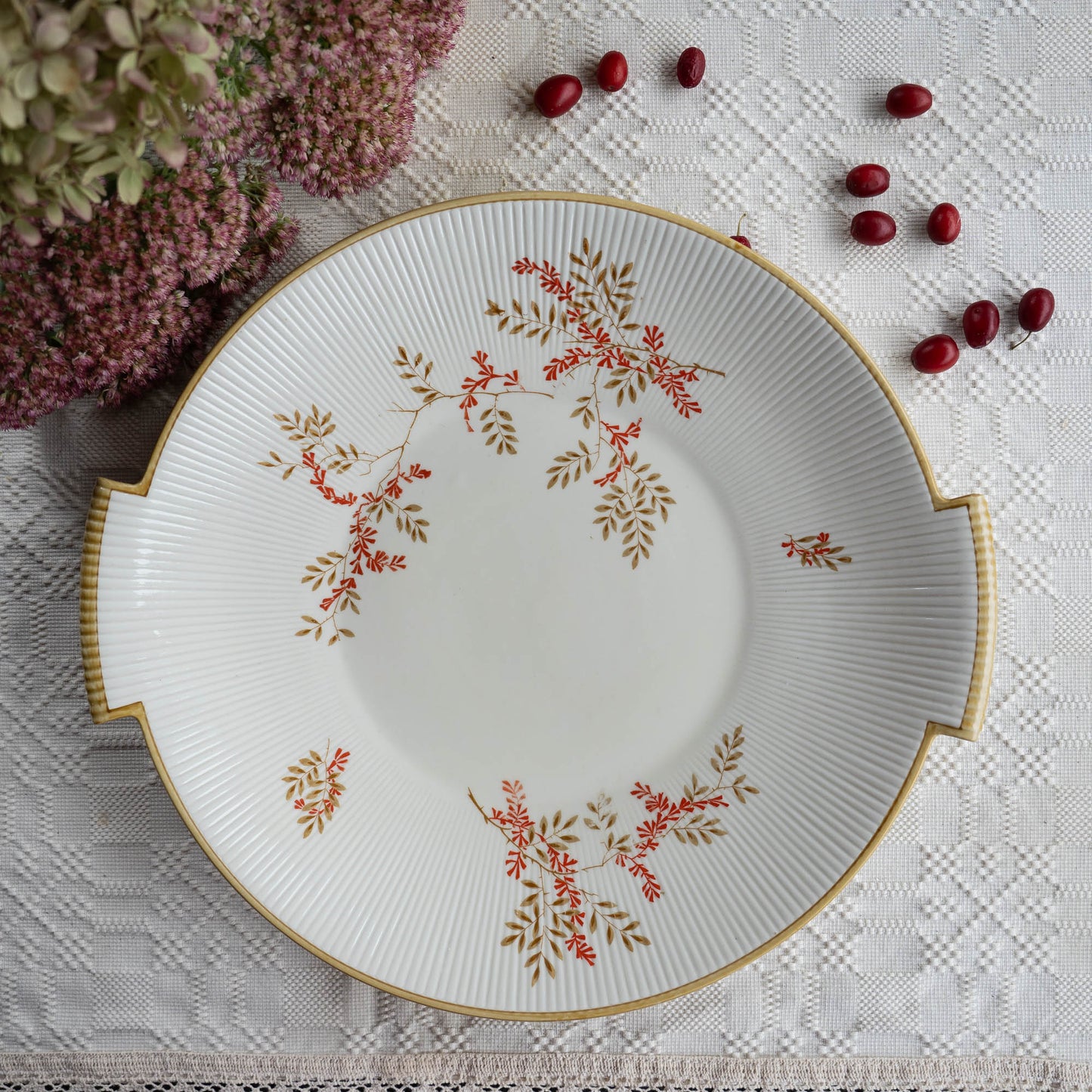
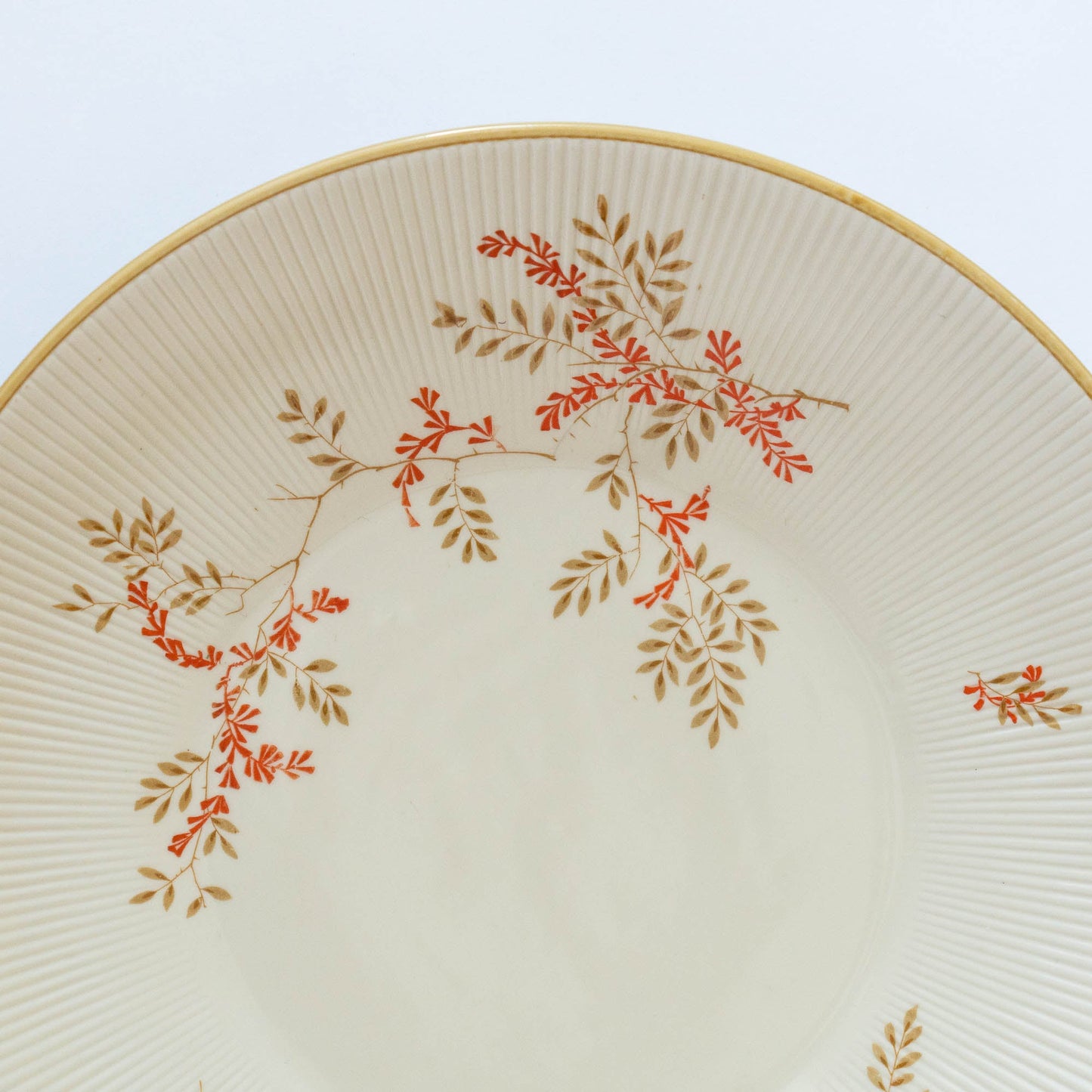
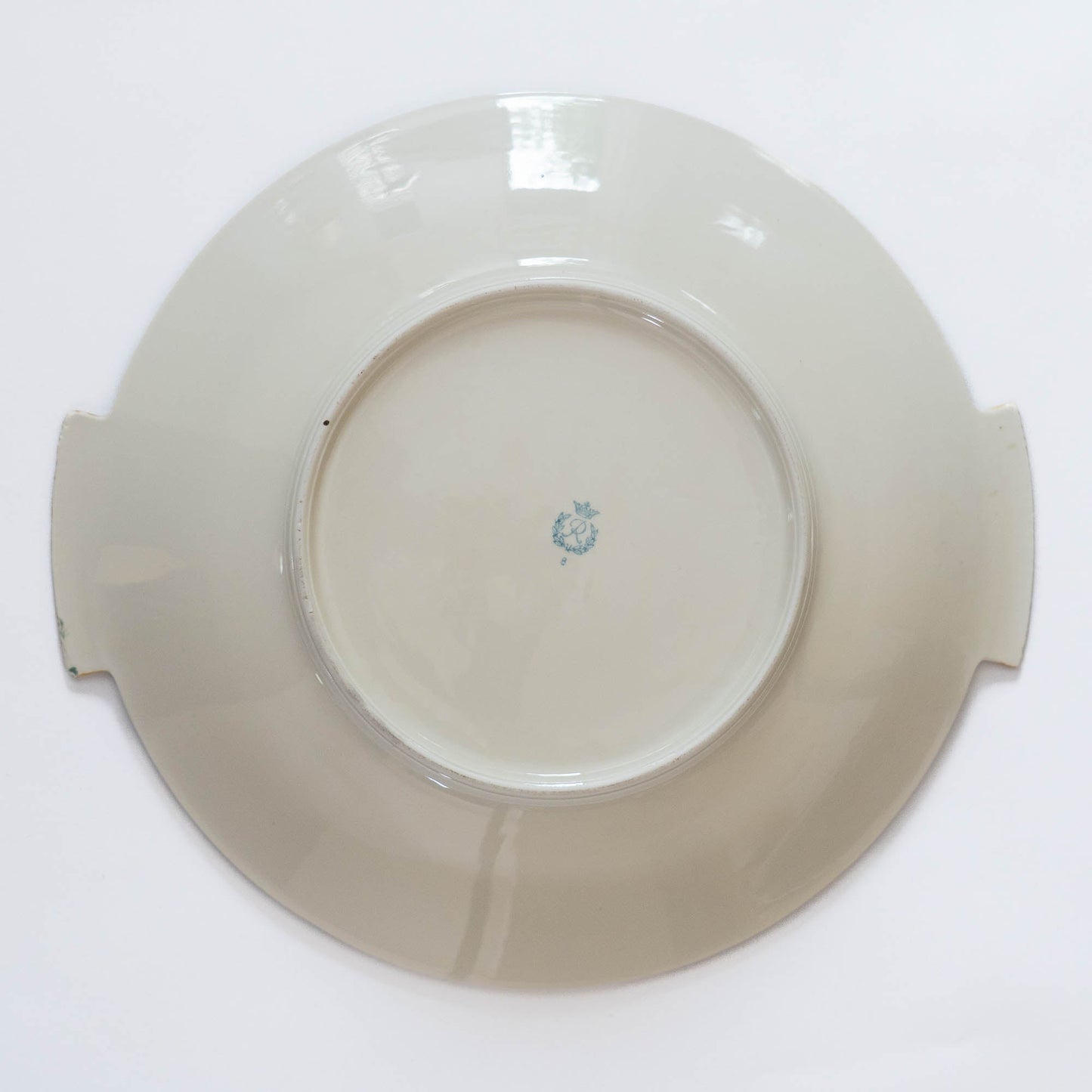
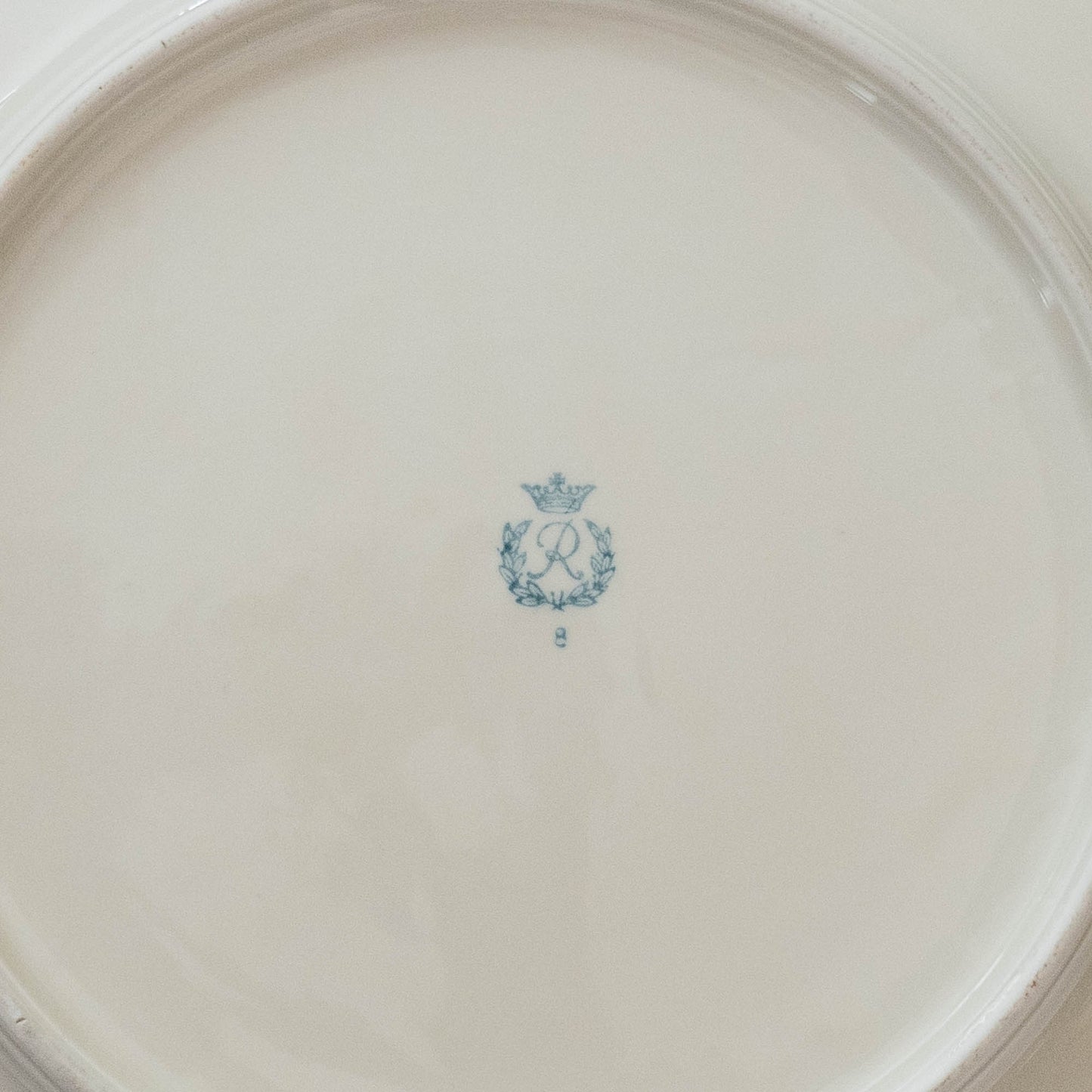
Origin & Maker
Reichenbach Porzellan, founded in 1900, boasts a rich history that reflects the evolution of porcelain manufacturing in Germany. The factory was established by nine independent porcelain decorators in Reichenbach, Thuringia, with full-scale production beginning in 1901. Initially, the company produced decorative porcelain, although its early pieces bore no identifiable marks.
In 1903, the factory was acquired by Gustav Schwabe, who shifted its focus to producing high-quality coffee, tea, and dining sets, cementing Reichenbach’s reputation for functional yet beautiful tableware. No distinctive marks from Schwabe’s ownership are known, but the factory's output during this period set the stage for future growth.
In 1918, the factory became part of the Carstens family empire when Christian and Ernst Carstens purchased it, bringing it into their extensive network of ceramic production facilities across Germany. Under the Carstens brothers, the factory thrived, reaching a peak workforce of 170 employees by 1937, producing fine porcelain pieces recognized for their elegance and quality.
After World War II, Reichenbach Porzellan found itself in East Germany, and like many West German-owned companies in the region, it faced nationalization pressures. In 1968, it officially became VEB Porzellanwerk Reichenbach, a state-run entity, and continued to produce porcelain under the centralized control of the East German government. The factory survived through several changes and expansions, remaining an important part of East Germany’s porcelain industry until the fall of the Berlin Wall.
Following German reunification in 1990, the factory briefly fell under private ownership by an Iranian investor, but was sold in 1993 to three local porcelain experts. Today, Reichenbach Porzellan is renowned for its commitment to preserving traditional German craftsmanship while innovating in contemporary porcelain design.
Blog posts
View all-

A Serendipitous Morning at the Rue de Bretagne ...
There are few joys in life that match the thrill of stumbling upon a hidden treasure, and for me, flea markets hold that magical allure. One of my favourite flea...
A Serendipitous Morning at the Rue de Bretagne ...
There are few joys in life that match the thrill of stumbling upon a hidden treasure, and for me, flea markets hold that magical allure. One of my favourite flea...
-

Emile Bourgeois and "Le Grand Dépôt" in Paris
Recently, I found this stunning Sarreguemines wash set. It was at the Brocante in Belfort, France. On this day, we had got up at 4 AM to be there in...
Emile Bourgeois and "Le Grand Dépôt" in Paris
Recently, I found this stunning Sarreguemines wash set. It was at the Brocante in Belfort, France. On this day, we had got up at 4 AM to be there in...
-

The Legacy of Robert Haviland: A Journey from N...
The story of Robert Haviland porcelain is one of artistry, transatlantic ambition, and enduring heritage. It begins in the mid-19th century when David Haviland, an enterprising New Yorker, founded Haviland...
The Legacy of Robert Haviland: A Journey from N...
The story of Robert Haviland porcelain is one of artistry, transatlantic ambition, and enduring heritage. It begins in the mid-19th century when David Haviland, an enterprising New Yorker, founded Haviland...








